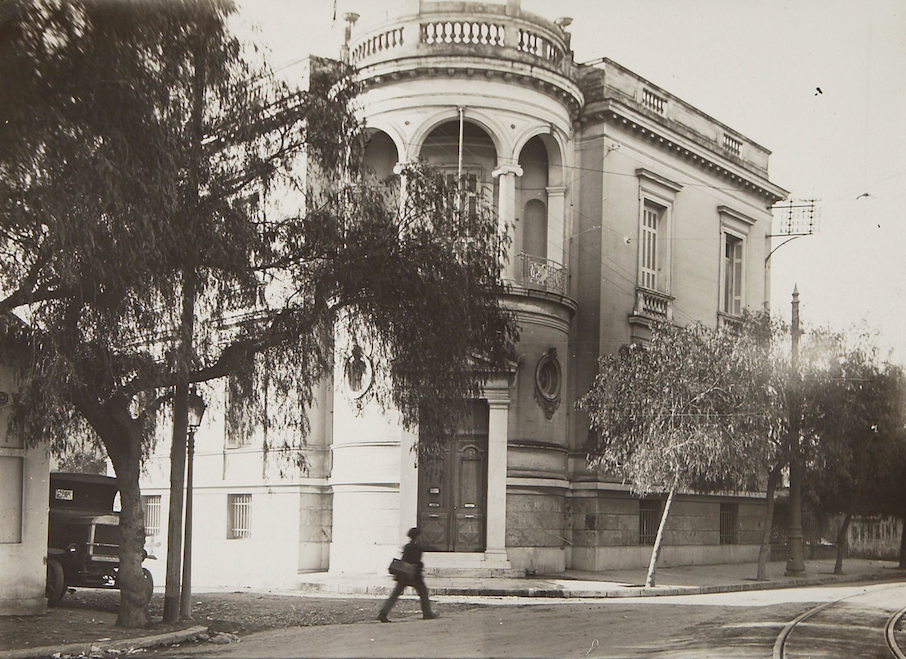Among the rites of passage in training young archaeologists is the presenting of lectures on highly specific topics requiring as much research as time and the available library facilities allow. Gilbert had been assigned as his topic the “Roman Agora,” an ancient open space north of the Acropolis used as a marketplace. Since it was Roman in date, this topic appealed to Italians always keen to study and stress their ancient heritage outside of Italy, a phenomenon called “Romanitas.”
We are fortunate that a travelogue survives written by Pausanias who travelled around Greece in the second century AD. His Description of Greece has enabled the identification of the remains of many ancient monuments. Among many buildings in Athens dedicated by the Roman Emperor Hadrian during his reign 117-138 CE, Pausanias wrote that “most splendid of all are one hundred columns. … Here, too, is a building adorned with a gilded roof and alabaster … books are stored in it.” Since this description corresponds to the internal colonnade discovered fronting the rooms of a typical ancient library, the identification of Hadrian’s library is secure.
Pausanias then writes: “There is also a gymnasium named after Hadrian; it, too, has one hundred columns from the quarries of Libya.” It was for this reason that Gilbert argued that the internally colonnaded structure immediately south of Hadrian’s Library was Hadrian’s Gymnasium and that only the western marble entrance was dedicated c. 10 BCE.
When Gilbert presented his talk in 1922, the area east of the entrance had not been fully cleared yet. The archaeological evidence for its use as a marketplace (measures of capacity, cup-like hollows of varying sizes cut into the stone floor slabs, standard measures of length, inscriptions naming the merchants) which had been exposed in Greek excavations Gilbert suggested were attributable to a usage later than Pausanias.

Now, however, the Roman Agora is accepted as being a marketplace, of the Augustan period, and it has been suggested that Hadrian’s Gymnasium was located south of the Temple of Olympian Zeus where an inscription mentioning Hadrian’s Gymnasium was found on the site of a large Roman building. For a twenty-one year old student giving such an academic lecture, Gilbert’s audience was remarkable. In addition to members of the other archaeological schools and the Italian Embassy in attendance, the very distinguished Lady Law arrived and sat in a kind of box seat and the Princess di Vicovaro sat with her Greek family, the Skouzes, in the front row. Since his Venizelist friends also attended, Gilbert was concerned to keep both factions entertained separately. As Gilbert wrote: “Society at my lecture was distinctly well represented but it was distinctly royalist in tendency. It was curious how I hardly knew a [soul] among the Italians.” Gilbert’s mother would have been proud at such a gathering.


